ZHCSNH4B august 2020 – july 2023 DLP471TP
PRODUCTION DATA
- 1
- 1 特性
- 2 应用
- 3 说明
- 4 Revision History
- 5 Pin Configuration and Functions
-
6 Specifications
- 6.1 Absolute Maximum Ratings
- 6.2 Storage Conditions
- 6.3 ESD Ratings
- 6.4 Recommended Operating Conditions
- 6.5 Thermal Information
- 6.6 Electrical Characteristics
- 6.7 Switching Characteristics
- 6.8 Timing Requirements
- 6.9 System Mounting Interface Loads
- 6.10 Micromirror Array Physical Characteristics
- 6.11 Micromirror Array Optical Characteristics
- 6.12 Window Characteristics
- 6.13 Chipset Component Usage Specification
- 7 Detailed Description
- 8 Application and Implementation
- 9 Power Supply Recommendations
- 10Layout
- 11Device and Documentation Support
- 12Mechanical, Packaging, and Orderable Information
6.8 Timing Requirements
Over operating free-air temperature range and supply voltages (unless
otherwise noted)
| PARAMETER | TEST CONDITIONS | MIN | TYP | MAX | UNIT | |
|---|---|---|---|---|---|---|
| LVCMOS | ||||||
| tr | Rise time(1) | 20% to 80% reference points | 25 | ns | ||
| tf | Fall time(1) | 80% to 20% reference points | 25 | ns | ||
| LOW SPEED INTERFACE (LSIF) | ||||||
| tr | Rise time(2) | 20% to 80% reference points | 450 | ps | ||
| tf | Fall time(2) | 80% to 20% reference points | 450 | ps | ||
| tW(H) | Pulse duration high(3) | LS_CLK. 50% to 50% reference points | 3.1 | ns | ||
| tW(L) | Pulse duration low(3) | LS_CLK. 50% to 50% reference points | 3.1 | ns | ||
| tsu | Setup time(4) | LS_WDATA valid before rising edge of LS_CLK (differential) | 1.5 | ns | ||
| th | Hold time(4) | LS_WDATA valid after rising edge of LS_CLK (differential) | 1.5 | ns | ||
| HIGH SPEED SERIAL INTERFACE (HSSI) | ||||||
| tr | Rise time - data(5)(6) | From –A1 to A1 minimum eye height specification | 50 | 115 | ps | |
| Rise time - clock(5)(6) | From –A1 to A1 minimum eye height specification | 50 | 135 | ps | ||
| tf | Fall time — data(5)(6) | From A1 to –A1 minimum eye height specification | 50 | 115 | ps | |
| Fall time — clock(5)(6) | From A1 to –A1 minimum eye height specification | 50 | 135 | ps | ||
| tW(H) | Pulse duration high(7) | DCLK. 50% to 50% reference points | 0.275 | ns | ||
| tW(L) | Pulse duration low(7) | DCLK. 50% to 50% reference points | 0.275 | ns | ||
(1) See Figure 6-9 for rise time and fall time for LVCMOS.
(2) See Figure 6-4 for rise time and fall time for LSIF.
(3) See Figure 6-4 for pulse duration high and low time for LSIF.
(4) See Figure 6-4 for setup and hold time for LSIF.
(5) See Figure 6-11 for rise time and fall time for HSSI Eye
Characteristics.
(6) See Figure 6-12 for rise time and fall time for HSSI.
(7) See Figure 6-12 for pulse duration high and low for HSSI.
Equation 1. 

Equation 2. 

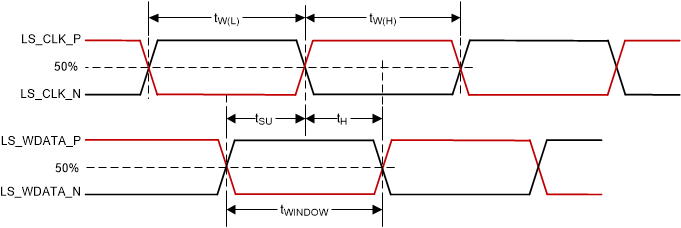 Figure 6-4 LSIF Timing
Requirements
Figure 6-4 LSIF Timing
Requirements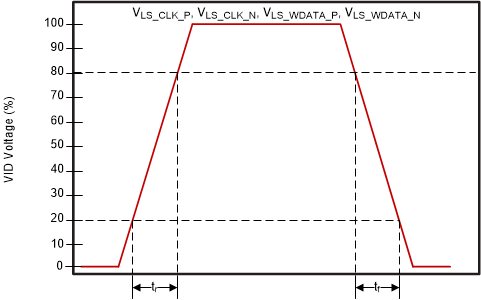 Figure 6-5 LSIF Rise, Fall Time
Slew
Figure 6-5 LSIF Rise, Fall Time
Slew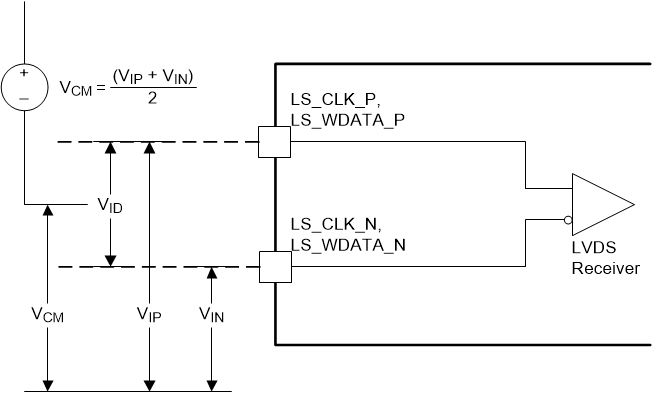 Figure 6-6 LSIF Voltage
Requirements
Figure 6-6 LSIF Voltage
Requirements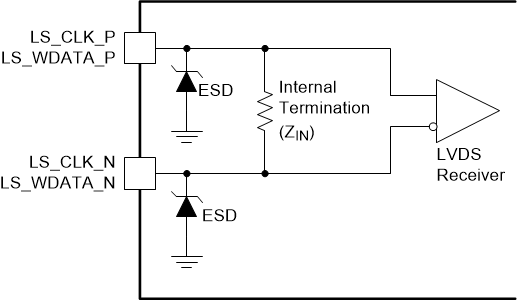 Figure 6-7 LSIF Equivalent Input
Figure 6-7 LSIF Equivalent Input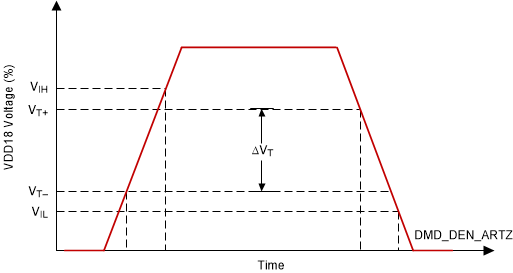 Figure 6-8 LVCMOS Input
Hysteresis
Figure 6-8 LVCMOS Input
Hysteresis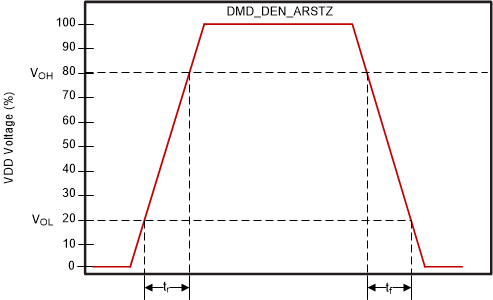 Figure 6-9 LVCMOS Rise, Fall Time Slew
Rate
Figure 6-9 LVCMOS Rise, Fall Time Slew
RateEquation 3. 

Equation 4. 

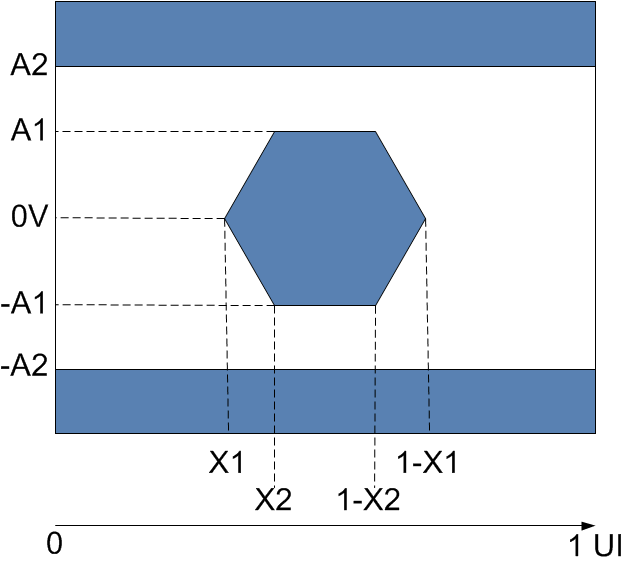 Figure 6-11 HSSI Eye
Characteristics
Figure 6-11 HSSI Eye
Characteristics Figure 6-12 HSSI CLK
Characteristics
Figure 6-12 HSSI CLK
Characteristics
